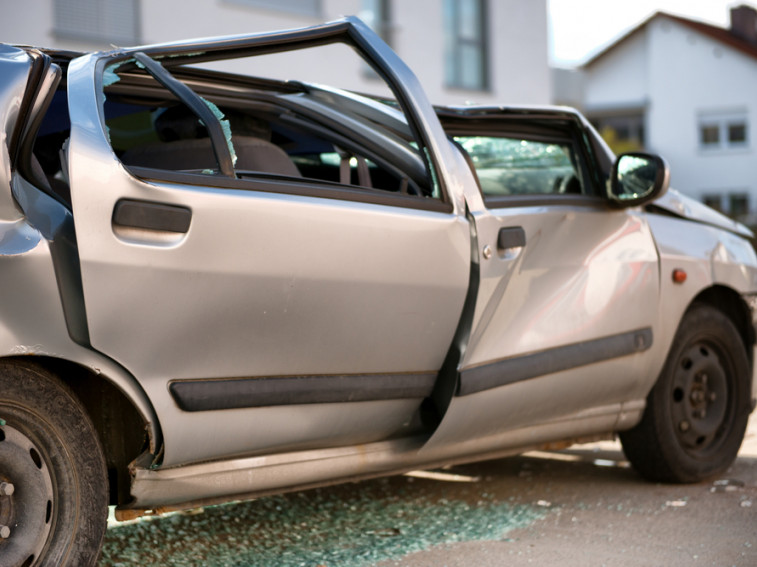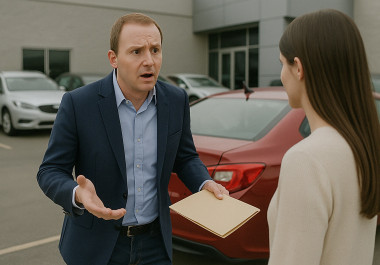In a nutshell, Category A is one of the four salvage categories (or salvage titles) into which salvage cars are classified. It’s basically a type of insurance write-off. Now, Category A vehicles are one of the few types of salvage cars you won’t see for sale in our online vehicle auctions. Mainly, that’s because they’re too badly damaged to be of any use to anyone, by their very definition. That doesn’t stop our experts here at RAW2K getting questions about them from our customers occasionally, though, so for your convenience we’ve answered some of the most common ones below!
What is an insurance write-off?
If a car has been involved in an accident, or been damaged in some other way (such as through flood damage), then it’ll be subject to an inspection at the insurer’s discretion. Essentially, the aim of this inspection is to determine whether the car can be driven again.
Insurers will ‘write off’ a car when the cost of the repairs to get it roadworthy again would outstrip its total value. (This is why they use the phrase ‘totalled’ in the US in reference to the same process.) Written off cars will then be classified into one of four categories set out by the Association of British Insurers.
Here’s a brief rundown of the four ABI categories:
Category A - Strictly scrap only, parts and all.
Category B - Car must be scrapped, but some parts can be removed.
Category S - Notable structural damage, but potentially repairable.
Category N - Non-structural damage, but potentially repairable.
Category U - Unrecorded, since details surrounding its classification are unclear.
Category X - Usually vehicles which have been stolen and subsequently recovered.
Often, these salvage cars are then sent off to be scrapped, but not always. Salvage cars which have been categorised as Category N or Category S can sometimes be bought back and repaired to become roadworthy again. However, cars classed as Category A or Category B are too unsafe to return to the roads, and must by law be scrapped.
What is a Category A car?
Category A is the most severe of the four salvage categories set out by the ABI. It’s used to indicate a car that’s suffered such a catastrophic level of damage that it can never be returned to the road. It’s notably different from Category N and Category S cars - whereas these are simply uneconomical to repair, Category A is actively dangerous.
This may be because of physical damage it sustained in a serious collision, such as a twisted chassis or crushed bodywork, or it may have suffered irreparable damage to its mechanical or electrical components. For these reasons, a Cat A car is viewed to be even more dangerous than Category B.
While Cat B cars are permitted to have certain parts removed, Category A cars must be scrapped in their entirety, as the nature of the damage means that even their components are viewed to pose a significant risk to human health, through toxicity, potential for electrocution or other physical danger (such as jagged metal).
Is it worth repairing a Category A car?
Unfortunately, it’s illegal to repair a Category A salvage car with the intention of putting it back onto the roads, for the reasons we’ve outlined above. Category A is a salvage title that’s not assigned lightly, and if an expert considers it to pose a tangible danger both to the driver and other road users on behalf of the ABI, that judgement is not up for debate.

That means a Category A car cannot be driven again. However, it’s perfectly legal to sell a Cat A car, as long as the owner is truthful about its status as such. As you might expect though, they’re extremely difficult to sell on for any price, and many salvage car auctions will refuse to stock it. That includes us here at RAW2K!
This is because by definition, they’re no use to even the most skilled of mechanics, and an undeniable burden to the average driver. For the vast majority of people, it amounts to nothing more than a useless chunk of metal, so it’s far better to leave it to be scrapped by the appropriate authorities.
What happens after a car is classed as Category A by the ABI?
As soon as the insurer’s inspection writes off the car, there are a few formal steps to be completed - the insurer must conclude the claim settlement with the former owner, issue payment and identify the car to the Environment Agency as suitable for scrapping. Once the car becomes a Category A salvage car, it officially becomes waste, as what’s called an End of Life vehicle.

If the car is severely damaged or leaking fluids, action is taken to contain the environmental risk it poses until it can removed to a suitable Authorised Treatment Facility. (All scrapyards must have an ATF licence from the Environment Agency in order to legally operate.)
Once at the ATF, the car will be fully depolluted, with all its hazardous fluids removed and recycled. Then, specialist techniques and equipment (such as magnets and ‘flotation’) are used to separate the car out into its component parts and materials, which are then recycled accordingly. All told, at least 95% of the car is recycled, in accordance with EU law on ELVs.
What are my rights if my car is a Category A insurance write-off?
Once your car has been written off, the insurer will typically give you a payout, and then take legal ownership of the car. From that point on, it becomes their responsibility, which means you’ve got little to no say in what they do with it.
Now, that’s not always the be-all and end-all. If your car is a Category N or a Category S car, you can challenge the insurer on their decision to write it off, and buy it back to have it repaired and put back on the roads.
Be aware though, that this isn’t going to be an economical (or cost-effective) solution. What’s more, you’ll have the best chance of success on your challenge if you’re able to back up your argument with expert judgement and outside documentation, such as an engineer’s report.
It’s also worth bearing in mind that if your car has been classed as Category A or Category B, the insurer won’t give you that option at all. When their faced with a car that’s been that severely damaged, they bear a lot of responsibility for ensuring that it cannot pose a danger to either you, the driver, or other road users.
How can I tell if I'm looking at a Category A car?
Trust us, it’s usually pretty easy to tell! Most Category A cars will bear significant signs of the damage that caused them to be written off, such as scorch marks from a fire or water marks from flood damage.
If it’s been in a collision, it won’t just be a matter of scratched paintwork - the severe structural damage to the car’s frame will be evident. It will have been bent, twisted or crushed, and it’s likely the internals such as electronics and mechanical components will be damaged or non-functional, too.
Should I buy a Category A car?
Generally, it’s not worth bothering. As we mentioned above, it’s not illegal to sell Category A cars, but since the vast majority of buyers are unable to get any practical or financial value out of them, they’re almost certainly not worth your time or money. And as we’ve just explained, insurers won’t give you the option at all!

However, that’s not to say that the same applies to all salvage cars. While Category B cars tend to be the most useful to professional mechanics, many drivers can still get plenty of use out of Category N and Category S cars. You’ll definitely find no shortage of those amongst our online car auctions right here at RAW2K, including many from global brands like Vauxhall, Ford and Audi. Why not take a look around our site, and see what you can find?




